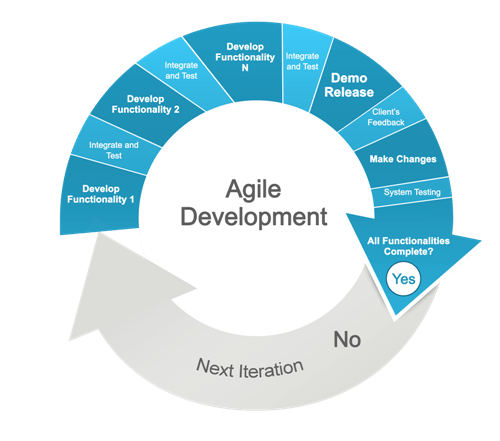Introduction:
Software development has undergone a transformative journey in recent years, with Agile methodologies leading the charge. Agile’s innovative principles, which prioritize flexibility, collaboration, and customer-centricity, have redefined how teams approach development projects. However, as we peer into the horizon of software development, we must ask ourselves: does Agile have what it takes to stay relevant in the ever-changing landscape?
The Agile Revolution:
The roots of Agile can be traced back to 2001 when a group of forward-thinking developers crafted the Agile Manifesto. This manifesto emphasized valuing individuals and interactions, delivering working software over documentation, collaborating with customers, and being responsive to change. These core values struck a chord within the development community and spurred the rise of Agile methodologies like Scrum, Kanban, and Extreme Programming.
Navigating the Challenges:
While Agile has brought tremendous benefits, it has not been without its fair share of challenges. One of the primary hurdles is its implementation within traditional organizational structures. Embracing Agile requires a cultural shift, as it demands empowerment, self-organization, and cross-functional collaboration. Overcoming resistance and aligning company-wide practices with Agile principles can be a formidable task.
Moreover, the notion that Agile fits all projects equally has been questioned. While Agile excels in iterative development and managing evolving requirements, some large, complex projects may find the frequent feedback and adjustments more burdensome than advantageous.
Hybrid Approaches – The Middle Path:
In response to these challenges, many development teams have adopted hybrid approaches. By blending elements of Agile with traditional methodologies, teams can tailor their processes to specific project needs. This flexibility allows them to embrace Agile’s adaptability while retaining certain structures that suit their circumstances.
Scaling Agile – Beyond the Team:
Agile’s initial success within small teams sparked the desire to scale it across entire organizations. To accommodate this, frameworks like SAFe and LeSS were introduced. These frameworks provide a structured way to align multiple teams, departments, and stakeholders, ensuring a synchronized approach to large-scale projects while preserving the essence of Agile.
The Tech-Driven Future:
As technology continues to progress at a breakneck pace, software development faces exciting new opportunities and challenges. The rise of artificial intelligence, machine learning, and automation has the potential to transform how software is built, tested, and deployed. Agile will need to incorporate these advancements while maintaining its focus on iterative progress and continuous improvement.
Remote Work and Virtual Collaboration:
Recent global events have thrust remote work into the spotlight, forcing teams to adapt quickly to virtual collaboration. Agile teams are no exception, and the future of Agile will likely be shaped by the tools and practices that facilitate seamless remote collaboration and communication.
Customer-Centricity Remains Paramount:
At the heart of Agile lies the customer. As businesses strive to meet evolving customer demands and preferences, Agile must remain steadfast in its commitment to customer-centricity. The ability to respond swiftly to customer feedback and changing market conditions will be a defining factor in Agile’s future relevance.
Conclusion:
The future of Agile is not set in stone, but its adaptability and resilience suggest it will continue to thrive in the ever-changing world of software development. Challenges notwithstanding, Agile’s core principles and values provide a solid foundation for navigating the uncertainties that lie ahead. Whether through hybrid approaches, scaling to the enterprise level, embracing emerging technologies, or adapting to remote work, Agile is poised to remain a driving force in empowering teams to build better software, faster and with a stronger focus on customer satisfaction.











